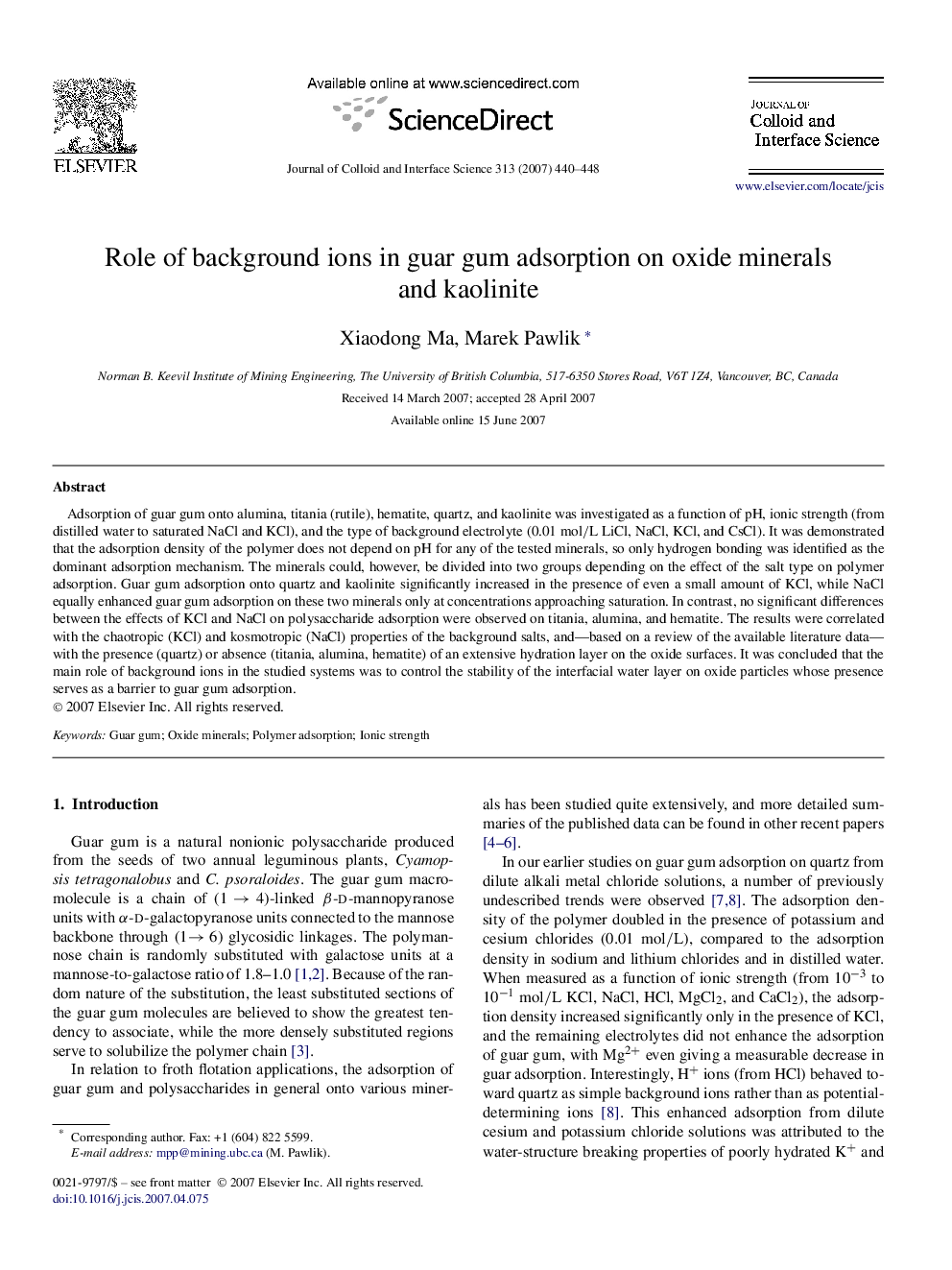| Article ID | Journal | Published Year | Pages | File Type |
|---|---|---|---|---|
| 611778 | Journal of Colloid and Interface Science | 2007 | 9 Pages |
Adsorption of guar gum onto alumina, titania (rutile), hematite, quartz, and kaolinite was investigated as a function of pH, ionic strength (from distilled water to saturated NaCl and KCl), and the type of background electrolyte (0.01 mol/L LiCl, NaCl, KCl, and CsCl). It was demonstrated that the adsorption density of the polymer does not depend on pH for any of the tested minerals, so only hydrogen bonding was identified as the dominant adsorption mechanism. The minerals could, however, be divided into two groups depending on the effect of the salt type on polymer adsorption. Guar gum adsorption onto quartz and kaolinite significantly increased in the presence of even a small amount of KCl, while NaCl equally enhanced guar gum adsorption on these two minerals only at concentrations approaching saturation. In contrast, no significant differences between the effects of KCl and NaCl on polysaccharide adsorption were observed on titania, alumina, and hematite. The results were correlated with the chaotropic (KCl) and kosmotropic (NaCl) properties of the background salts, and—based on a review of the available literature data—with the presence (quartz) or absence (titania, alumina, hematite) of an extensive hydration layer on the oxide surfaces. It was concluded that the main role of background ions in the studied systems was to control the stability of the interfacial water layer on oxide particles whose presence serves as a barrier to guar gum adsorption.
Graphical abstractFigure optionsDownload full-size imageDownload as PowerPoint slide
